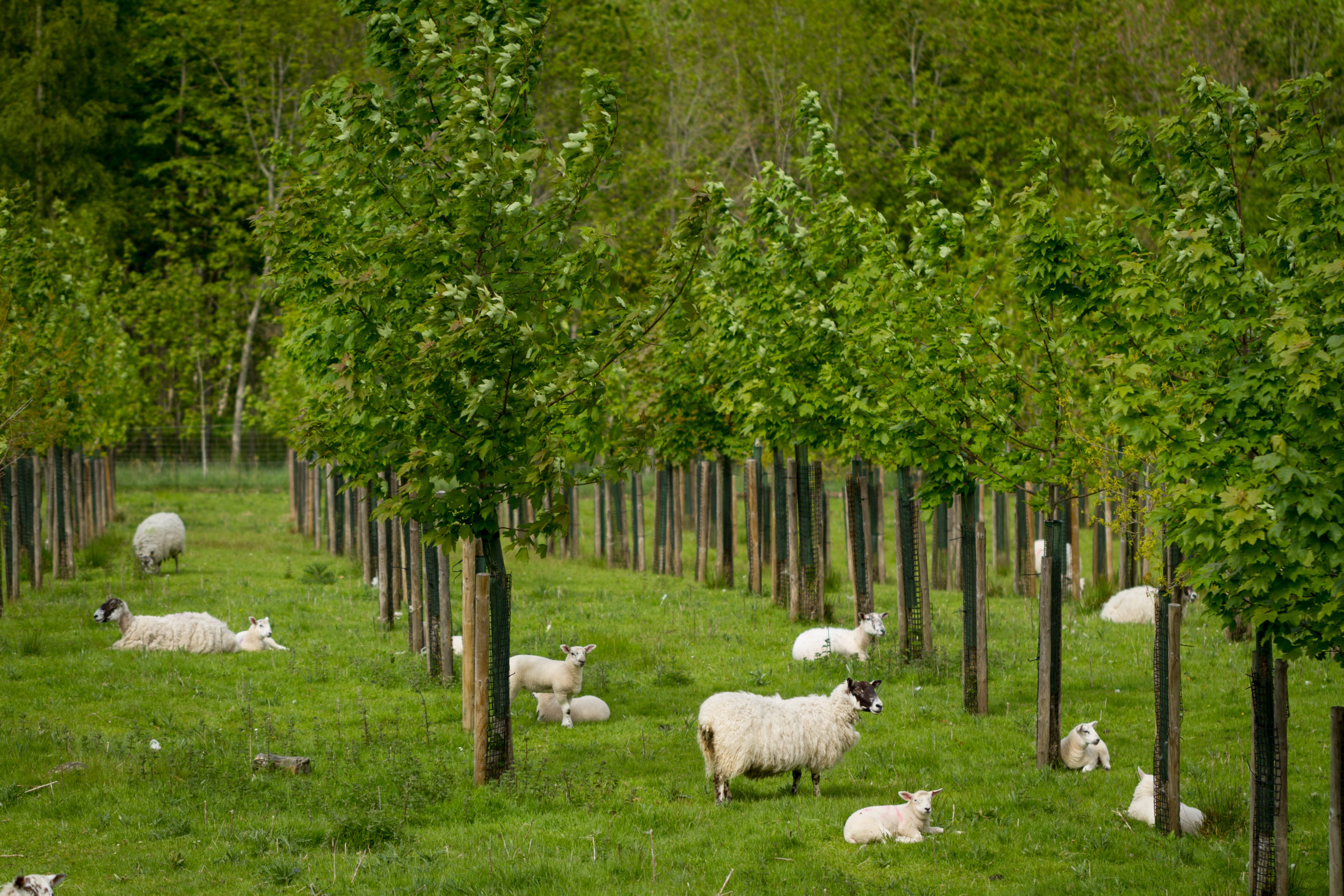Amidst the ongoing debate on future agricultural and land use in Scotland, integrating trees on farms is a topic that is receiving increasing attention.
There are many great examples of farmers and crofters who are leading the way, from Fife to Highland Perthshire, and Aberdeenshire to the Isle of Skye.
But while these trailblazers are rightly getting attention, figures suggest just 3% of UK farmland is currently under agroforestry systems. There is still some way to go for this to become established as a mainstream practice.
The organisation I work for, Soil Association, has conducted research, produced policy reports and organised knowledge exchange workshops across the country in recent years.
The evidence we have found is increasingly showing that there are productivity benefits from integrating trees, in addition to the better understood environmental gains. For example, the use of shelterbelts in dairy systems has been shown to reduce heat stress in animals and improve milk yields. Similarly, free-range chickens with 20% tree cover have been found to have increased laying rates and higher shell density, meaning higher output and reduced losses.
Farmers who are integrating livestock with trees in a silvopastoral approach point to animals expressing more natural behaviour, while selectively browsing on the lower canopy to access natural nutrients.
The wider benefits of trees on farms, such as capturing carbon, supporting pollinators and reducing the risk of soil erosion and downstream flooding, are now widely accepted.
Farm-scale forestry, introducing a timber production element to the farming system, may also be attractive to farmers looking to diversity their income stream.
More than one third of all woodland in Scotland – about 546,000 hectares – can be found on farms. Despite the acknowledged climate and nature benefits, however, integration of the management of woodland into the farming system, and uptake of agroforestry in particular, has been limited.
Part of the problem has been the lack of financial support for up-front capital costs, or grant support systems that are considered to lack flexibility and applicability. There are also barriers around skills, training, tenancy agreements and overgrazing by deer.
And a times, the political debate around future land use in Scotland can often pit farming against forestry, as if there is a binary choice to be made between rearing livestock or planting trees.
While these are legitimate concerns about carbon offsetting schemes, the discussion often misses a fundamental point. Farmers and land managers can be incentivised to integrate trees and woodland to maintain, and in many cases enhance, agricultural production. This can help meet the Scottish Government’s climate and nature targets while building greater resilience into food production.
This is particularly true in upland areas, where there is a genuine risk of productive farmland being lost to blanket forestry. The careful planning of agroforestry systems, with the right blend of public and private payments, can help keep people farming in these ‘less-favoured’ areas.
Events like GO Falkland can help to shine a spotlight on some of the great examples of farmers who are already incorporating trees into their systems.
Roger Howison from Parkhill Farm in Newburgh and David Carruth from the Future Forest Company, will share their experiences of agroforestry ventures with Helen Browning OBE, chief executive of the Soil Association and organic farmer, in an event that should spark some fascinating discussion.
These rich stories can help organisations like Soil Association, and many others, to make the case to government for better support for farmers and crofters through the emerging post-CAP support framework. Funding is only one part of the puzzle, but a clear signal from government that it wants to make it easier for farmers and crofters to integrate trees would be a good starting point.

